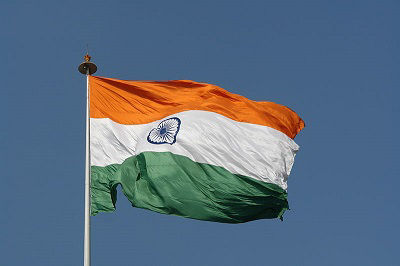The national flag of India consists of a horizontal rectangular tricolour of (from top to bottom) saffron (subdued orange), white and green, with a blue chakra (24-spoked wheel) centered in the white band. The chakra in the centre of the flag symbolises Mahatma Gandhi's goal of Indians being self reliant through the fabrication of their own clothing. The present day flag of India was first adopted following a meeting of the Constituent Assembly on 22 July 1947 and became the official flag of India on 15 August 1947. The flag is sometimes referred to as the "tricolour". The ratio of India's flag is 2:3. The flag was designed by Pingali Venkayya.
According to Indian law, the Indian flag is to be made of khadi, a specific type of hand-spun cloth which was originally popularised by Mahatma Gandhi. The official rights to manufacture the flag of India are held by the Khadi Development and Village Industries Commission who then sub licence these rights to regional groups.
The Flag Code of India governs the use of the Indian flag. The code originally prohibited the use of the flag by private citizens with the exception of national days such as Independence Day and Republic Day. In 2002 and again in 2005, the Union Cabinet of India amended the Flag Code of India to allow more extensive use by private citizens.

The flag of India flying in New Delhi
 WARNING - Flag Bazaar flags are lightweight and are not suitable for extended use on flagpoles
WARNING - Flag Bazaar flags are lightweight and are not suitable for extended use on flagpoles